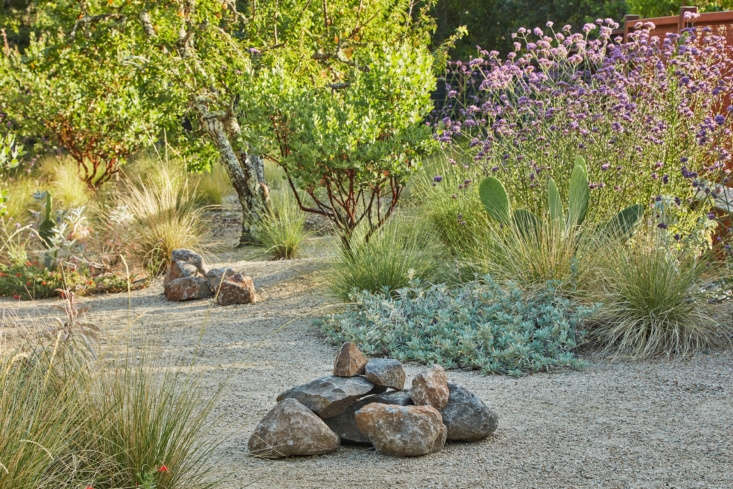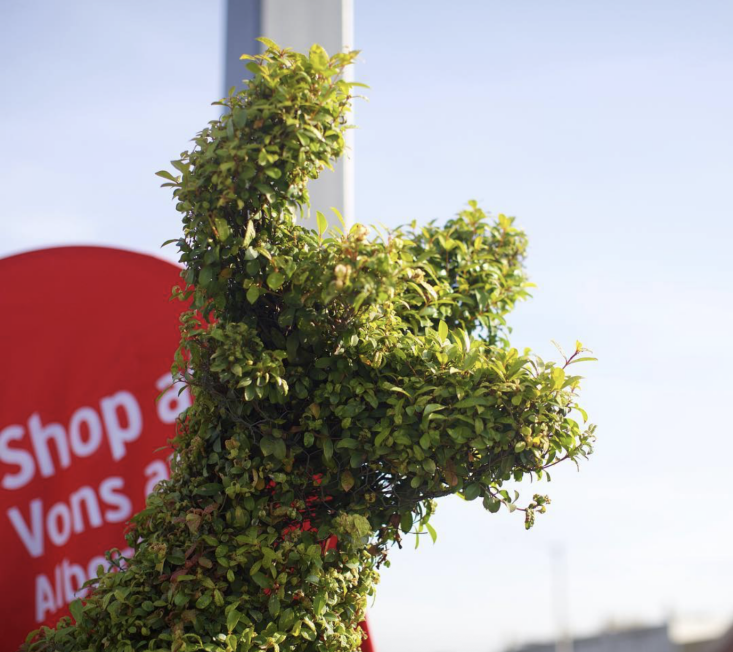Shrubs used to be so easy. In a world of lawns and trees, clipped shrubs provided the middle story. Inspired by the Sissinghursts and Great Dixters of our imaginations, they were clipped into balls and birds, or fashioned into walls for an outdoor room. Any densely growing woody shrub, also classified as a small tree, could be pressed into service for topiarizing.
Then Jake Hobson, who studied sculpture before training in the art of pruning in Osaka, introduced a wider audience to cloud-pruned trees and shrubs. (His cult tool company, Niwaki, is named after the Japanese word for “garden tree”). Small garden trees were pruned to capture the essence of a larger and more mature specimen—with a windswept, crooked-with-age, or a lightning-struck look. Shrubs, too, were pruned to convey a sense of the wider landscape; they might be lumpy and bumpy or shaped into more cloud-like masses.
Cloud pruning was a victim of its own success, however, with developers installing balls of boxwood and lollipop trees, and cramming them together for instant “character.” Clearly this is the opposite of Japanese pruning, a highly considered approach that doesn’t lend itself to trends and which is a very slow process, both to learn and then to practice.
Now that naturalism is finally becoming mainstream, what is a person with a sharp pair of secateurs to do? The answer does not involve leaving the garden to go wild.
N.B.: Featured photograph above courtesy of Niwaki.
Above: Some of Jake Hobson’s freshly clipped boxwood topiaries from a few years back, against looser shapes. Photograph courtesy of Niwaki.
First we consulted with Jake Hobson. “Rather than using pruned trees like the niwaki I’ve been interested in, gardeners in Japan are making more of a forest atmosphere,” he says. “So they’ve got more leafy trees, rather than conifers, and they’re not clipping them or shaping them. They’re thinning them really sensitively, to allow light in, and to create that sense of dappled early summer woodland. And they’re creating that atmosphere through raising and thinning the canopy.”
 Above: The new kind of pruning is not something you see in many public spaces in Japan, but the Tokachi Millennium Forest (designed by Dan Pearson) hints at the subtlety involved. Photograph by Kiichi Noro.
Above: The new kind of pruning is not something you see in many public spaces in Japan, but the Tokachi Millennium Forest (designed by Dan Pearson) hints at the subtlety involved. Photograph by Kiichi Noro.
“It’s as intensive as (what we think of as) the old style; it’s much more subtle, and it’s harder to do well,” continues Jake. The new direction has been influenced by changes in architecture and lifestyle. “It’s cheaper than using very expensive old pine trees. And the pruning, although there’s a lot of it, is less labor-intensive. In Japan, they’re always rebuilding houses; everything is built presuming it’s short-term. Fifty years or even 30 is a lot—you’re embarrassed by your parents’ house because it’s so old. Modern buildings have changed a lot from the Japanese style we think of, and the moment a house changes, the planting changes, and the use of the garden changes. Families have become more aware of the Western idea of a garden as a place to play in and relax in, rather than being a garden just to look at.”
 Above: A garden in Napa Valley designed by Californian landscape architects Terremoto. Photograph by Caitlin Atkinson.
Above: A garden in Napa Valley designed by Californian landscape architects Terremoto. Photograph by Caitlin Atkinson.
The building culture in Japan is not too dissimilar from that of Los Angeles, with its lack of preservation, and a parallel need to be practical in the face of earthquakes—as well as fires, floods, and the rest. Niwaki equipment is stocked by Plant Material, co-owned by landscape architect David Godshall. We asked some of his Terremoto colleagues how they prune in an increasingly shrubby world. Katherine Montgomery begins with this: “We work so much with California native plants that pruning has two different goals: to control nature or to mimic nature. I learned somewhere that plants like to be pruned, mimicking what would happen in the wild—losing limbs from passing animals, getting munched on, getting burned.” Continues Katherine: “A lot of plants here need to be pruned to mimic fire, removing the woody undergrowth to keep plants in check. Most pruning in LA is thoughtless shaping into cubes or balls, to bring some sense of order to a landscape that otherwise would grow, grow, grow.”
 Above: Photographed in South Australia, a landscape of remnant acacia forest in a scrub matrix, from Shrouded in Light: Naturalistic Planting Inspired by Wild Shrublands. Authors Kevin Philip Williams and Michael Guidi write: “This harsh, tortured landscape holds an intrinsic beauty that’s compelling beyond conventional standards.” Photograph by M. Fagg.
Above: Photographed in South Australia, a landscape of remnant acacia forest in a scrub matrix, from Shrouded in Light: Naturalistic Planting Inspired by Wild Shrublands. Authors Kevin Philip Williams and Michael Guidi write: “This harsh, tortured landscape holds an intrinsic beauty that’s compelling beyond conventional standards.” Photograph by M. Fagg.
Danielle VonLehe, another designer at Terremoto, has just been reviewing a book on the wilder potential of shrubs in gardens (it was out last June; see At Last: Showtime for Shrubs). She suggests: “Pruning is sort of for humans, right? If we were to let shrubs go wild and act as they would in natural shrublands, the woody undergrowth would provide refuge and shelter for birds, insects, lizards, little creatures of all sorts.” It’s a dichotomy, that is not tolerated in a maintained landscape. “The unpruned shrub poses a physical, and maybe a conceptual, challenge to us.”
 Above: Living art outside gas stations is a thing in Los Angeles. Photograph by Matt Manfredi.
Above: Living art outside gas stations is a thing in Los Angeles. Photograph by Matt Manfredi.
Meanwhile, it will be a long time before we are ready to resist making plants look like anything other than plants. “We do have the charming tradition of gas stations having whimsical topiary,” notes Katherine. Long may it last.
See also:



